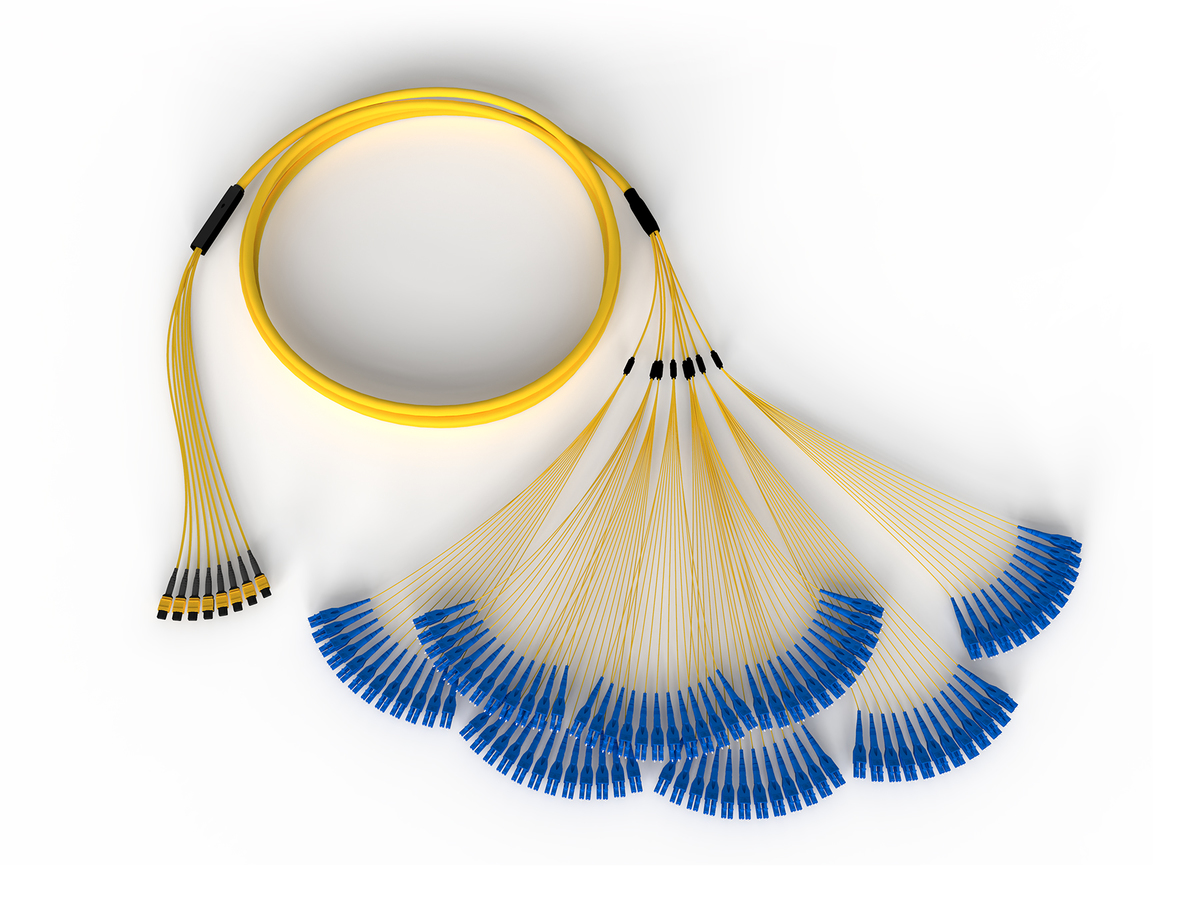

AA97896GSZGKS100F
EDGE™ RC Indoor Breakout Trunk – MTP to LC 96F 24F MTP to 2F LC Uniboot Hybrid Trunk, Super 24 LSZH, indoor cable, Single-mode (OS2), Pulling grip on one end, 10 feet
General Specifications
| Product Number | AA97896GSZGKS100F |
| Flame Rating | Plenum (OFNP) |
| Fiber Category | Single-Mode (OS2) Ultra |
| Cable Assembly Type | EDGE™ Rapid Connect Trunk |
| Cable Type | Indoor Plenum |
| Brand | EDGE™ |
Standards
| RoHS | Free of hazardous substances according to RoHS 2011/65/EU |
Environmental Conditions
| Temperature Range, Installation | 0 °C to 60 °C (32 °F to 140 °F ) |
| Temperature Range, Operation | 0 °C to 70 °C (32 °F to 158 °F ) |
| Temperature Range, Storage | -40 °C to 70 °C (-40 °F to 158 °F ) |
Design
| Fiber Count | 96 |
| Polarity | Type S |
Mechanical Specifications
| Nominal Outer Diameter | 10.9 mm (0.43 in ) |
| Min. Bend Radius Installation | 163.5 mm (6.44 in) |
| Min. Bend Radius Operation | 109 mm (4.29 in) |
| Weight | 110 kg/km (73.92 lb/1000 ft) |
Specifications - Connector A
| Insertion Loss, Max. | 0.35 dB |
| Connector Type | 24 F MTP® (non-pinned) |
| Ferrule Material | Composite |
| Housing Material | Composite |
| Reflectance | < -60 dB |
Specifications - Connector B
| Insertion Loss, Max. | 0.25 dB |
| Connector Type | LC UPC uniboot |
| Ferrule Material | Composite |
| Reflectance | < -60 dB |
Furcation - Connector A
| Leg Length | 1320.8 mm (52 in) |
| Furcation Type | Single Furcation |
| Leg Color | Yellow |
Furcation - Connector B
| Furcation Type | Single Furcation |
| Leg Color | Yellow |
| Leg Length | 609.6 mm (24 in) |
Pulling Grip - Connector A
| Pulling grip | Yes |
| Grip Outer Diameter | 55.9 mm (2.2 in) |
Dimensions
| Length | 100 ft |
| Cable Weight | 110 kg/km (73.92 lb/1000 ft) |
Solution flexibility
Allows a flexible path to connectivity with MTP and LC configurations.
Factory Termination
Results in quicker deployment and better performance while reducing risks associated with field installation, rework, or high insertion loss.
Reduced Installation Time
EDGE RC allows the installer to remove splicing in the field. Reducing time and cost by up to 70 percent when compared to deploying multiple cables in lower fiber counts.
